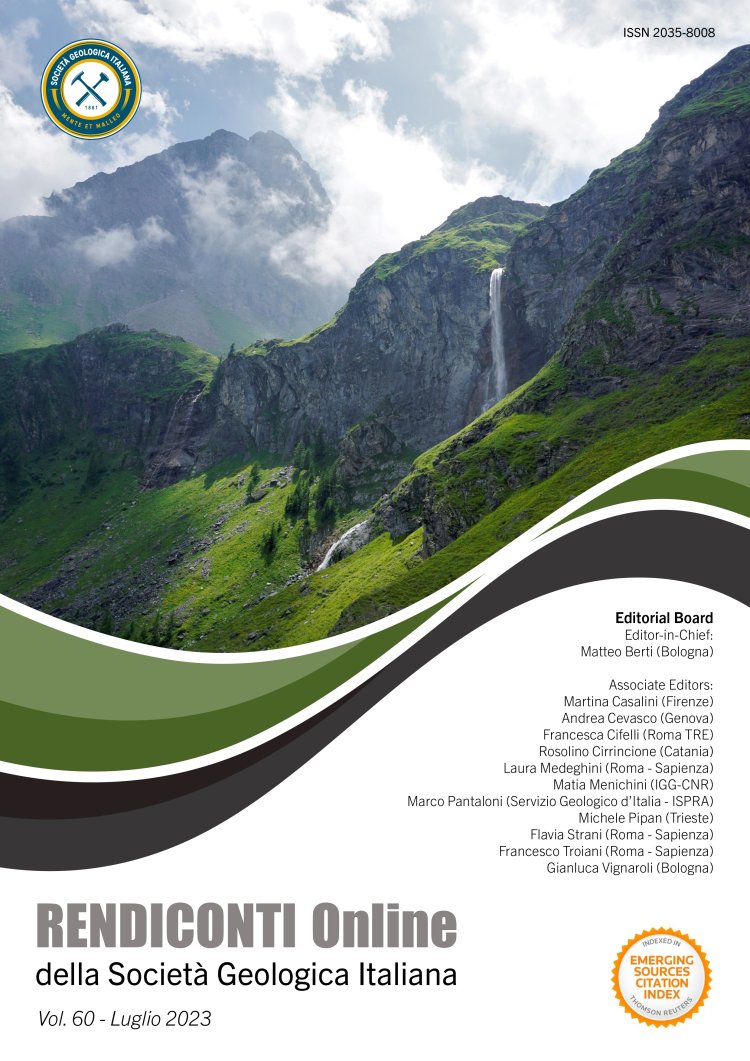

Climate change remarks in a glacial catchment within Southern Rhaetian Alps: the Fumo Valley case study (Adamello Group, Northern Italy)
Manuel La Licata1
1Department of Earth and Environmental Sciences, University of Pavia, Via Ferrata 1, 27100 - Pavia, Italy.
Corresponding author e-mail: manuel.lalicata01@universitadipavia.it
Volume: 60/2023
Pages: 51-71
Abstract
In this study, glacier retreat from the end of the Little Ice Age to present time and climatic variations on recent time scale were assessed in the Fumo Valley, which is a small glacial catchment located in the Adamello Group (Southern Rhaetian Alps, Italy). The study area has a high scientific and cultural value as part of the UNESCO Adamello-Brenta Geopark and provides several ecosystem and socio- economic services. Therefore, the assessment of climate change impacts at local scale is essential for a sustainable watershed management, as well as for conservation strategies.
A present-state glacier inventory was elaborated by means of remote sensing using Sentinel-2 satellite images. Then, it was compared to previous published glacier inventories in order to assess numerical and geometric surface variations. Also, two temperature data series related to different thirty-year periods (i.e., 1971-2000 and 1991-2020) were analysed to assess air temperature variations. The results highlight a total surface loss of 5.99 km2 (-70.9%) between 1850 and 1958. Between 1958 and 2022 a total area reduction of 0.87 km2 (-35.5%) was observed, which is comparable to other studies carried out at national scale. However, a minor progression phase was observed between 1958 and 1981 (+76.3%), which is partially attributable to the glacial advance episode that occurred between the 1970s and 1980s in the Italian Alps. After, total glacier area declined by 63.4% (1981-2022), with an accelerated regression between 2015 and 2022 (i.e., higher annual rate of variation, formation of ice-contact lakes, tongue separation, and severe glacier fragmentation). The mean annual air temperature rose of 0.6°C, with a greater variation in mean annual maximum temperature (+1°C) than minimum temperature (+0.1°C), and an average temperature increase higher in spring and summer than in autumn and winter. These results can be interpreted as truthful indicators of climate change impacts occurring at local scale, highlighting the vulnerability of the study area with respect to the predicted future climatic scenarios.
Keywords
Get Full Text